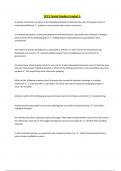Summary
Samenvatting Digital Persuasive Communication (K001438A ) - UGent
- Course
- Institution
NL: Complete summary of the course Digital Persuasive Communication (K001438A) by prof Femke Loose. Detailed lesson notes based on the slides + all guest lessons including table of contents for a clear overview. Created in academic year . EN: Full summary of the course Digital Persuasive Communi...
[Show more]












